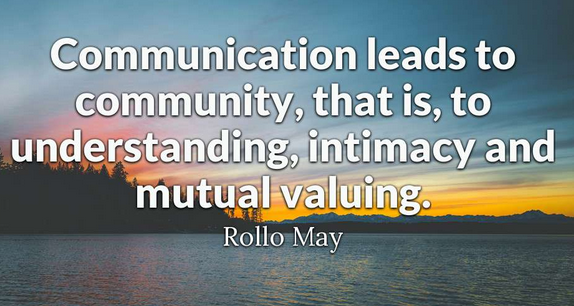One of the most critical skills any manager must have is the ability to clearly communicate expectations. Too often we give and receive vague directives to get things done, to make something happen, to support, to facilitate, to empower…the big idea is usually communicated well. What is often missing are the details of what is expected- the nuts and bolts of a project or major task.
Managers set staff up for failure when these communication mistakes are made:
- ASKING vs. INSTRUCTING-Failing to recognize when instruction is required prior to the individual completing the task.
- Asking in a vague manner.
- Asking multiple people to complete the same task.
- Failing to recognize that staff, especially DSPs may have conflicting priorities and deadlines.
- Failing to offer thanks and positive feedback for a job well done.
As well, many times we give orders. Orders are generally very clear. They are for those situations where a real safety threat is present, not for the day to day communications program managers are expected to provide.
Instructions provide a much clearer view of what you are expecting your staff to do.
Managers should aim to get the main idea across, with clear, distinct points, and provide a timeline.
Clear communication includes:
- Telling people exactly what you want them to do- provide the main idea
Examples would be ensuring MARS are updated; planning for trips for the following weekend; meal planning; implementing new ISP goals
- Spell out exact tasks to be performed, completed- provide the detail
Too often we assume our staff understand what we want. We assume they know to pay attention to all the same details we would give attention. We should always assume our staff are not on the same plane as we are. We should provide detailed list of what needs to happen- until we are sure the staff fully understands the task at hand.
- Provide time frames- so people know WHEN you want things done
It sounds silly- when we ask for something to get done by the weekend. But trust me. Our staff might consider Sunday night the weekend. By providing time frames, with actual dates if needed and times of day, we leave little room for failure here.
- Summarize information and repeat back-to be sure you’re both on same page
Example:
Instead of saying– “I’d like you to review the MARS for accuracy before putting them the book”, be more precise.
Say This: “Please review the MARS and compare them to med scripts and bottle directions. By Monday morning, I expect that all three will match up.”
You can add in check points to the set of expectations: “At our meeting on Friday May 1, I want you to have medication information accurately reflected in the MARS. I want you to tell me where we had mistakes and summarize last months errors.”
Let’s look at some different ways communication scenarios.
While sipping your morning coffee Wednesday morning, you notice an article about a local flower show on the weekend. Later that afternoon you tell Sallie the Lead staff to “Lets send our clients to this– Plan it and let the weekend folks know about it”.
It all sounds pretty black and white, right? How can someone mess this up? Sallie is a great staff, who can multi task many things. You have faith she can set this trip up. Sallie does what she thinks you want her to do. She prints directions to the exhibit location and on Friday she gets the van gassed up, prepares lunches to bring a long, packs up meds and informs weekend staff. Everyone is excited.
Come Saturday, the staff and clients get to the exhibit hall only to find out they needed tickets. At the gate, staff ask about tickets- and are told they sold out two weeks prior.
What happened here?
How did Sallie mess this up?
Question should be: HOW DID I MESS THIS UP??
You did not provide clear communication that would have provided Sallie with your expectations.
When you ask Sallie later on, what she views as normal trip organizing tasks. She walks you thru the tasks she would complete. Sallie assumed that your mentioning and asking for this trip that it was open still and had tickets been needed- you would have mentioned that. You and Sallie were not on the same page for sure.
Some people would say this is a cop out and Sallie should have known better. But let’s face it- clear communication would have prevented this. Better planning would have as well.
Clear communication entails telling someone exactly what you want them to do. Your idea of planning for a trip, and Sallie’s idea of planning for a trip, are two very different thought processes. You see certain steps and detail as being obvious; Sallie ( and most staff) would not necessarily think of the various details and actions needed to ensure a successful outing. Think of task analysis.
Managers should provide clear expectations and direction- and not leave much open to interpretation. Of course, once a staff has successfully completed planning tasks such as MARs Management or Trip Planning a few times, managers can delegate these tasks with confidence that things will get done right.
Managers can write tools and job aides for staff to use when working on just about any tasks. A Trip Planning Check List for instance, authored by you, would have made this process much more effective for everyone.
A good idea many experienced managers maintain a Program Operations Manual in which an entire section of job aids is kept.
![]()


